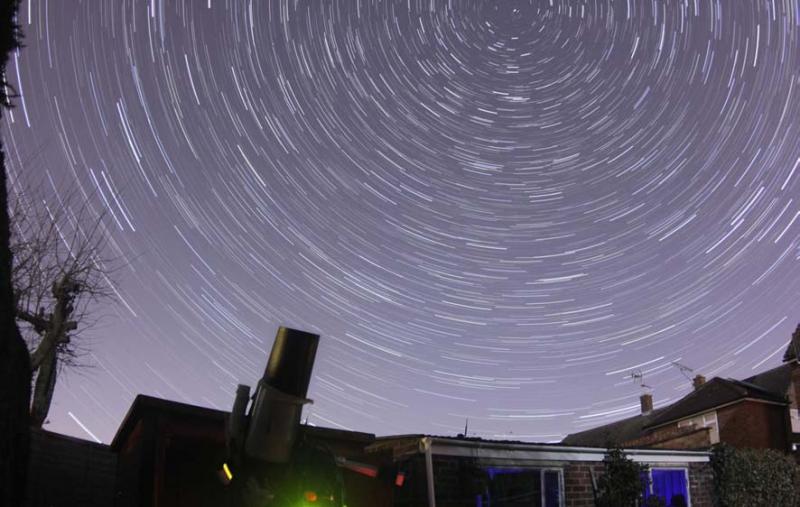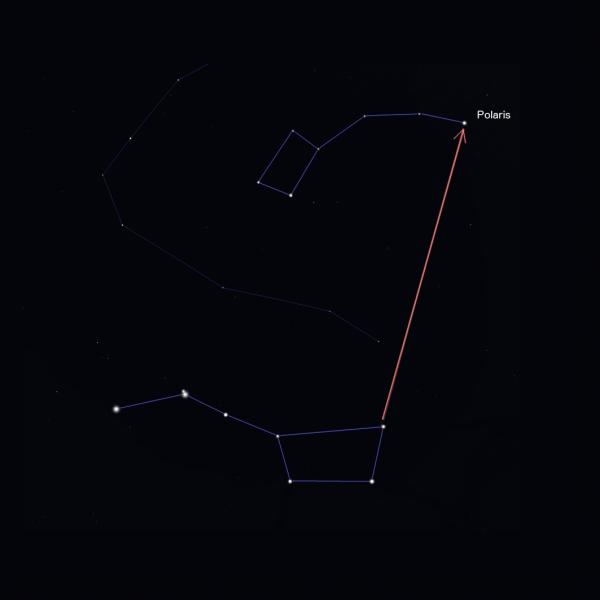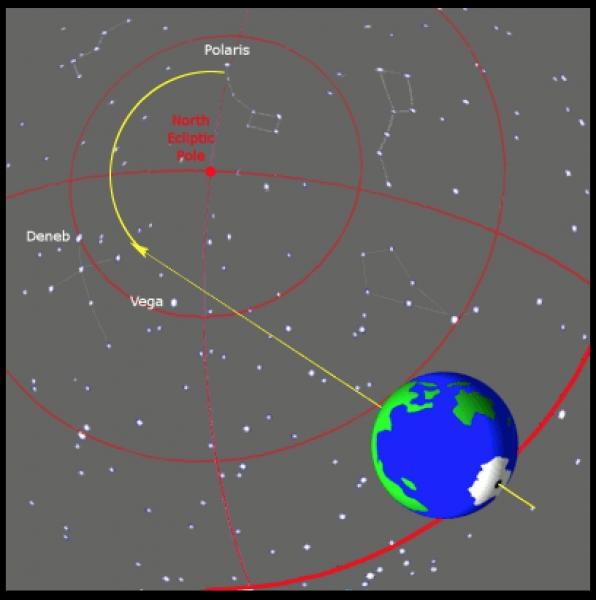2018 August 13
The Pole Star
Introduction
If you go outside on a clear night, point a camera upwards and take a long exposure photograph, you’ll find that the resulting image shows star trails. Even an exposure time of a a minute or so is enough to show the effect and stars closer to the horizon have longer trails compared to those higher in the sky.
Star trail photographs nicely illustrate the illusion that, from down here on the ground, that the entire sky seems to be rotating about a single point in the sky (indeed this is what the ancients used to believe.) In reality, the rotation of the sky is due to the fact that the earth is rotating on its axis. The axis of rotation is an imaginary line passing through the centre of the earth which the planet appears to revolve around, and if we extend it outwards (figure 2) you can see that in both cases the axis will point towards that part of the sky where everything appears to rotate about.
Polaris does not lie exactly at the north celestial pole- it is about 1 degree away, so if you look closely on star trail photographs you will see that it describes a little circle. The southern hemisphere by contrast has no bright star near to the south celestial pole- the star closest to the southern pole is a rather faint +5.4 magnitude star called σ-Octantis.

It would appear that, night after night, year after year our night skies remain the same. Although the Moon waxes and wanes and the planets come and go, overall the stars tend to remain a permanent fixture. This is in fact an illusion, the stars do have their own motion, but because they are so far away, in general it takes many millions of years for this motion to become apparent.
There are other effects which cause the stars to slowly change their position in the night sky- for example there is the phenomenon of ‘precession’. The combined gravitational pull of the sun and the Moon causes the the earth to ‘wobble’ on it’s axis rather like a spinning top. As a result, the earth’s axis of rotation slowly describes a circle over time, taking 25,700 years to complete one circuit (see figure 4).The effect of precession means that the rotational axis does not point in the same direction, and so after some time the pole star changes. In 3000BC, the star Thuban in Draco the Dragon would have been the northern pole star. In the year 14000, the brilliant star Vega in Lyra will be the pole star for observers in the northern hemisphere.
Using the Pole Star.
Polaris is a useful tool for amateur astronomers and for navigation. The altitude of Polaris above the horizon depends on your latitude. In Leicester, the Pole star is some 52° 36′ above the horizon- this means the latitude for Leicester is also 52° 36′. The further north you go, the higher the altitude of Polaris becomes- from the centre of the north pole it will of course be right overhead at the zenith.

If you fit a drive to your telescope, the drive will slowly rotate your telescope in RA at the same rate as the earth turns- this is called Sidereal time, and one sidereal day is 23 hours 56 minutes 4.095 seconds (slightly shorter than 24 hours). If you wish to do long exposure photography or visual observations of the Moon and planets, a drive is essential as you will need to keep your target stationary in the telescope field for a long period of time.
In the northern hemisphere, we are very lucky to have a bright star marking the position of the north celestial pole in the the night sky. Even if you don’t use Polaris to align your telescope, it is still important to know where it is and how to locate it as it is a very important marker in the night sky.
Paul G Abel
https://britastro.org/wp-content/uploads/2018/08/123Capture.JPG
| The British Astronomical Association supports amateur astronomers around the UK and the rest of the world. Find out more about the BAA or join us. |
